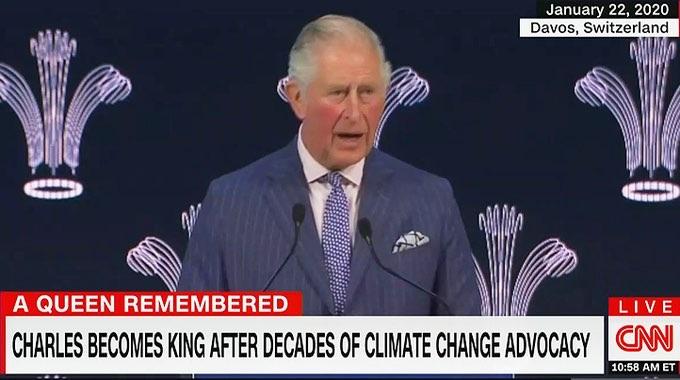



Thoughts?
You’re welcome:
https://www.ncbi.nlm.nih.gov/pmc/articles/PMC5835698/
“It has been used by millions of people around the world exhibiting a wide margin of clinical safety. In this review, we summarize the in vitro and in vivo evidences demonstrating that ivermectin exerts antitumor effects in different types of cancer. Ivermectin interacts with several targets including the multidrug resistance protein (MDR), the Akt/mTOR and WNT-TCF pathways, the purinergic receptors, PAK-1 protein, certain cancer-related epigenetic deregulators such as SIN3A and SIN3B, RNA helicase, chloride channel receptors and preferentially target cancer stem-cell like population.
Importantly, the in vitro and in vivo antitumor activities of ivermectin are achieved at concentrations that can be clinically reachable based on the human pharmacokinetic studies done in healthy and parasited patients. Thus, existing information on ivermectin could allow its rapid move into clinical trials for cancer patients.”
————
https://www.ncbi.nlm.nih.gov/pmc/articles/PMC7505114/
“Ivermectin has powerful antitumor effects, including the inhibition of proliferation, metastasis, and angiogenic activity, in a variety of cancer cells. This may be related to the regulation of multiple signaling pathways by ivermectin through PAK1 kinase. On the other hand, ivermectin promotes programmed cancer cell death, including apoptosis, autophagy and pyroptosis. Ivermectin induces apoptosis and autophagy is mutually regulated. Interestingly, ivermectin can also inhibit tumor stem cells and reverse multidrug resistance and exerts the optimal effect when used in combination with other chemotherapy drugs.”
————-
https://pubmed.ncbi.nlm.nih.gov/32549918/
“Ivermectin, as an old anti-parasite drug, can suppress almost completely the growth of various human cancers, including ovarian cancer (OC).”
————-
https://pubmed.ncbi.nlm.nih.gov/32533071/
“Ivermectin proposes many potentials effects to treat a range of diseases, with its antimicrobial, antiviral, and anti-cancer properties as a wonder drug. It is highly effective against many microorganisms including some viruses. In this comprehensive systematic review, antiviral effects of ivermectin are summarized including in vitro and in vivo studies over the past 50 years. Several studies reported antiviral effects of ivermectin on RNA viruses such as Zika, dengue, yellow fever, West Nile, Hendra, Newcastle, Venezuelan equine encephalitis, chikungunya, Semliki Forest, Sindbis, Avian influenza A, Porcine Reproductive and Respiratory Syndrome, Human immunodeficiency virus type 1, and severe acute respiratory syndrome coronavirus 2. Furthermore, there are some studies showing antiviral effects of ivermectin against DNA viruses such as Equine herpes type 1, BK polyomavirus, pseudorabies, porcine circovirus 2, and bovine herpesvirus 1. Ivermectin plays a role in several biological mechanisms, therefore it could serve as a potential candidate in the treatment of a wide range of viruses including COVID-19 as well as other types of positive-sense single-stranded RNA viruses.”
————-
https://clinicaltrials.gov/ct2/show/NCT04447235
“This is a randomized, doubled-blind and placebo-controlled phase II study that will evaluate the efficacy of the early use of ivermectin plus losartan in cancer patients who present with recent diagnosis of COVID-19.
The trial will enroll 176 patients with previous diagnosis of active cancer (88 in each arm) and the aim of the study is to assess the efficacy of these drugs combination to decrease the incidence of COVID-19 severe complications. Patients will receive single dose ivermectin of 12mg after the confirmed diagnosis of COVID-19, followed by 15 days of losartan.
We believe that the association of anti-viral activity of the ivermectin plus the extracellular blockade of the receptor used by the virus will decrease the overall viremia and subsequently improve clinical outcomes.”
————
“In our current study, we demonstrated that ivermectin displayed preclinical activity against hematologic malignancies in vitro and delayed tumor growth in vivo at concentrations that appear pharmacologically achievable. Mechanistically, ivermectin induced chloride influx, membrane hyperpolarization, and generated reactive oxygen species (ROS). Furthermore, ivermectin synergized with cytarabine and daunorubicin. Thus, given its prior safety and toxicity testing, ivermectin could be rapidly advanced into clinical trial for patients with leukemia.”
————
https://onlinelibrary.wiley.com/doi/10.1111/jcmm.15195
“Oesophageal squamous cell carcinoma (ESCC), the most common form of oesophageal malignancies in the Asia-Pacific region, remains a major clinical challenge. In this study, we found that ivermectin, an effective antiparasitic drug that has been approved for patients to orally treat onchocerciasis for over 30 years, displayed potent antitumour activity against ESCC cells in vitro and in nude mice. We demonstrated that ivermectin significantly inhibited cell viability and colony formation, and induced apoptosis through a mitochondrial-dependent manner in ESCC cells. Ivermectin also abrogated ESCC cell migration, invasion, as well as the protein levels of MMP-2 and MMP-9. Mechanistically, ivermectin strongly inhibited the expression of PAK1; by further gain- and loss-of-function experiments, we confirmed that PAK1 played a crucial role in ivermectin-mediated inhibitory effects on ESCC cells. In addition, the data indicated that ivermectin promoted PAK1 degradation through the proteasome-dependent pathway. Additionally, ivermectin synergized with chemotherapeutic drugs including cisplatin and 5-fluorouracil to induce apoptosis of ESCC cells. Interestingly, the in vivo experiments also confirmed that ivermectin effectively suppressed tumour growth and lung metastasis of ESCC. Collectively, these results indicate that ivermectin exerts a potent antitumour activity against ESCC and is a promising therapeutic candidate drug for ESCC patients, even those carrying metastasis.”
————
https://www.nature.com/articles/ja201711
“In human ovarian cancer and NF2 tumor cell lines, high-dose ivermectin inactivates protein kinase PAK1 and blocks PAK1-dependent growth. PAK proteins are essential for cytoskeletal reorganization and nuclear signaling, PAK1 being implicated in tumor genesis while inhibiting PAK1 signals induces tumor cell apoptosis (cell death).
PAK1 is essential for the growth of more than 70% of all human cancers, including breast, prostate, pancreatic, colon, gastric, lung, cervical and thyroid cancers, as well as hepatoma, glioma, melanoma, multiple myeloma and for neurofibromatosis tumors.110”


The only posts with three digit upvotes are old stickies. Everything else is two digits. Most are under twenty.
[sad Pepe]
Help me find out!
MEDIA CONTACTS:
• WHO Press Office [email protected]
• Meghana Sharafudeen, Gavi +41 79 711 55 54 [email protected]
• Mazur, Gavi +41 79 429 3671 [email protected]
• Evan O’Connell, Gavi +33 6 17 57 21 26 [email protected]
• Laura Shevlin, Gavi +41 79 529 92 87 [email protected]
• Mike Jones, Chubb +44 20 7173 7793 +44 7 342 029 853 [email protected]
https://www.gavi.org/news/media-room/no-fault-compensation-programme-covid-19-vaccines-world-first
https://archive.is/mdnus (NYT, emphases mine):
[Something alarming is happening between our legs.
Sperm counts have been dropping; infant boys are developing more genital abnormalities; more girls are experiencing early puberty; and adult women appear to be suffering declining egg quality and more miscarriages.
It’s not just humans. Scientists report genital anomalies in a range of species, including unusually small penises in alligators, otters and minks. In some areas, significant numbers of fish, frogs and turtles have exhibited both male and female organs.
Four years ago, a leading scholar of reproductive health, Shanna H. Swan, calculated that from 1973 to 2011, the sperm count of average men in Western countries had fallen by 59 percent. Inevitably, there were headlines about “Spermageddon” and the risk that humans would disappear, but then we moved on to chase other shiny objects.
Now Swan, an epidemiologist at Mount Sinai Medical Center in New York, has written a book, “Count Down,” that will be published on Tuesday and sounds a warning bell. Her subtitle is blunt: “How our modern world is threatening sperm counts, altering male and female reproductive development, and imperiling the future of the human race.”
Swan and other experts say the problem is a class of chemicals called endocrine disruptors, which mimic the body’s hormones and thus fool our cells. This is a particular problem for fetuses as they sexually differentiate early in pregnancy. Endocrine disruptors can wreak reproductive havoc.
These endocrine disruptors are everywhere: plastics, shampoos, cosmetics, cushions, pesticides, canned foods and A.T.M. receipts. They often aren’t on labels and can be difficult to avoid.
“In some ways, the sperm-count decline is akin to where global warming was 40 years ago,” Swan writes. “The climate crisis has been accepted — at least by most people — as a real threat. My hope is that the same will happen with the reproductive turmoil that’s upon us.”
Chemical companies are as reckless as tobacco companies were a generation ago, or as opioid manufacturers were a decade ago. They lobby against even safety testing of endocrine disruptors, so that we have little idea if products we use each day are damaging our bodies or our children. We’re all guinea pigs.
Aside from the decline in sperm counts, growing numbers of sperm appear defective — there’s a boom in two-headed sperm — while others loll aimlessly in circles, rather than furiously swimming in pursuit of an egg. And infants who have had greater exposures to a kind of endocrine disruptor called phthalates have smaller penises, Swan found.
Uncertainty remains, research sometimes conflicts and biological pathways aren’t always clear. There are competing theories about whether the sperm count decline is real and what might cause it and about why girls appear to be reaching puberty earlier, and it’s sometimes unclear whether an increase in male genital abnormalities reflects actual rising numbers or just better reporting.
Still, the Endocrine Society, the Pediatric Endocrine Society, the President’s Cancer Panel and the World Health Organization have all warned about endocrine disruptors, and Europe and Canada have moved to regulate them. But in the United States, Congress and the Trump administration seemed to listen more to industry lobbyists than to independent scientists.
Patricia Ann Hunt, a reproductive geneticist at Washington State University, has conducted experiments on mice showing that the impact of endocrine disruptors is cumulative, generation after generation. When infant mice were exposed for just a few days to endocrine disrupting chemicals, their testes as adults produced fewer sperm, and this incapacity was transmitted to their offspring. While findings from animal studies can’t necessarily be extended to humans, after three generations of these exposures, one-fifth of the male mice were infertile.
“I find this particularly troubling,” Professor Hunt told me. “From the standpoint of human exposures, you could argue we are hitting the third generation just about now.” What if anything does all this mean for the future of humanity?
“I do not see humans becoming extinct, but I do see family lines ending for a subset of people who are infertile,” Andrea Gore, a professor of neuroendocrinology at the University of Texas at Austin, told me. “People with impaired sperm or egg quality cannot exercise their right to choose to have a child. That may not devastate our species, but it is certainly devastating to these infertile couples.”
More research is necessary, and government regulation and corporate responsibility are crucial to manage risks, but Swan offers practical suggestions for daily life for those with the resources. Store food in glass containers, not plastic. Above all, don’t microwave foods in plastic or with plastic wrap on top. Avoid pesticides. Buy organic produce if possible. Avoid tobacco or marijuana. Use a cotton or linen shower curtain, not one made of vinyl. Don’t use air fresheners. Prevent dust buildup. Vet consumer products you use with an online guide like that of the Environmental Working Group.
Many issues in headlines today won’t much matter in a decade, let alone in a century. Climate change is one exception, and another may be the risks to our capacity to reproduce.
The epitome of a “low blow” is a kick to the crotch. And that, friends, may be what we as a species are doing to ourselves.]
https://tv.avclub.com/18-episodes-of-the-muppet-show-have-content-disclaimers-1846321838
Disney Plus recently (and finally) got The Muppet Show, or at least as much of The Muppet Show as any streaming service can legally get without paying ungodly amounts of money for music licensing rights, but 18 episodes of the show were deemed potentially offensive enough that Disney added content disclaimers in front of them. The text of the disclaimers, which cannot be skipped past and include little 12-second timers so you know that you have to sit through them, explain that the episodes feature “negative depictions and/or mistreatment of people or cultures,” and while “these stereotypes were wrong then and are wrong now,” Disney has decided to leave them in order to “acknowledge the [offensive content’s] harmful impact, learn from it, and spark conversation to create a more inclusive future together.”
The 18 episodes are scattered throughout the run and consist of guest-host appearances from Jim Nabors, Joel Grey, Steve Martin, Peter Sellers, Cleo Laine, James Coco, Spike Milligan, Crystal Gayle, Kenny Rogers, Beverly Sills, Jonathan Winters, Alan Arkin, James Coburn, Joan Baez, Debbie Harry, Wally Boag, Marty Feldman, and Johnny Cash. Most of the content deemed offensive is pretty obvious, and it falls in line with the other imagery on Disney Plus that prompted the company to add disclaimers in front of Dumbo, Peter Pan, The Aristocats, and other animated films that veer off into racism. On The Muppet Show, the disclaimer-worthy stuff includes Johnny Cash performing in front of a confederate flag in his episode and the brief appearance of a puppet dressed as a stereotypical Native American (referred to as an “Indian”) in the Jim Nabors episode.








